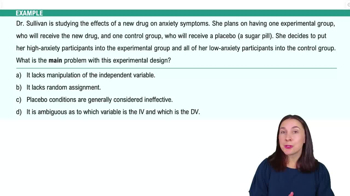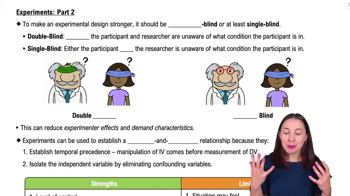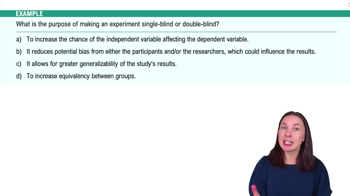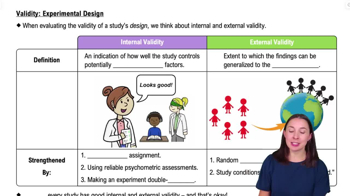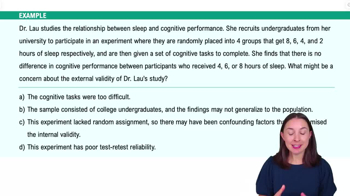Table of contents
- 1. Introduction to Psychology1h 43m
- 2. Psychology Research2h 20m
- 3. Biological Psychology2h 41m
- 4. Sensation and Perception28m
- 5. Consciousness and Sleep32m
- 6. Learning41m
- 7. Memory34m
- 8. Cognition37m
- 9. Emotion and Motivation35m
- 10. Developmental Psychology33m
- 11. Personality48m
- 12. Social Psychology41m
- 13. Stress and Health41m
- 14. Psychological Disorders44m
- 15. Treatment47m
2. Psychology Research
Intro to Research Methods
Struggling with Psychology?
Join thousands of students who trust us to help them ace their exams!Watch the first videoMultiple Choice
Whenever Junior feels sad, his mother says to him, 'Smile. It'll make you feel much better.' In this particular situation, Junior's mother appears to agree with the
A
common sense theory.
B
cognitive arousal theory.
C
facial feedback hypothesis.
D
cognitive-mediational theory.
 Verified step by step guidance
Verified step by step guidance1
Identify the key elements of the problem: Junior feels sad, and his mother suggests smiling to feel better.
Understand the concept of the facial feedback hypothesis: This hypothesis suggests that facial expressions can influence emotional experiences.
Consider how the facial feedback hypothesis applies to the situation: Junior's mother believes that by changing his facial expression (smiling), Junior can alter his emotional state (feeling better).
Differentiate the facial feedback hypothesis from other theories: The common sense theory suggests emotions lead to physical reactions, cognitive arousal theory involves physiological arousal and cognitive interpretation, and cognitive-mediational theory emphasizes cognitive appraisal before emotional response.
Conclude that Junior's mother's advice aligns with the facial feedback hypothesis, as it directly involves changing facial expressions to influence emotions.

 1:46m
1:46mWatch next
Master Roadmap of the Lesson with a bite sized video explanation from Hannah Gordils
Start learningRelated Videos
Related Practice










